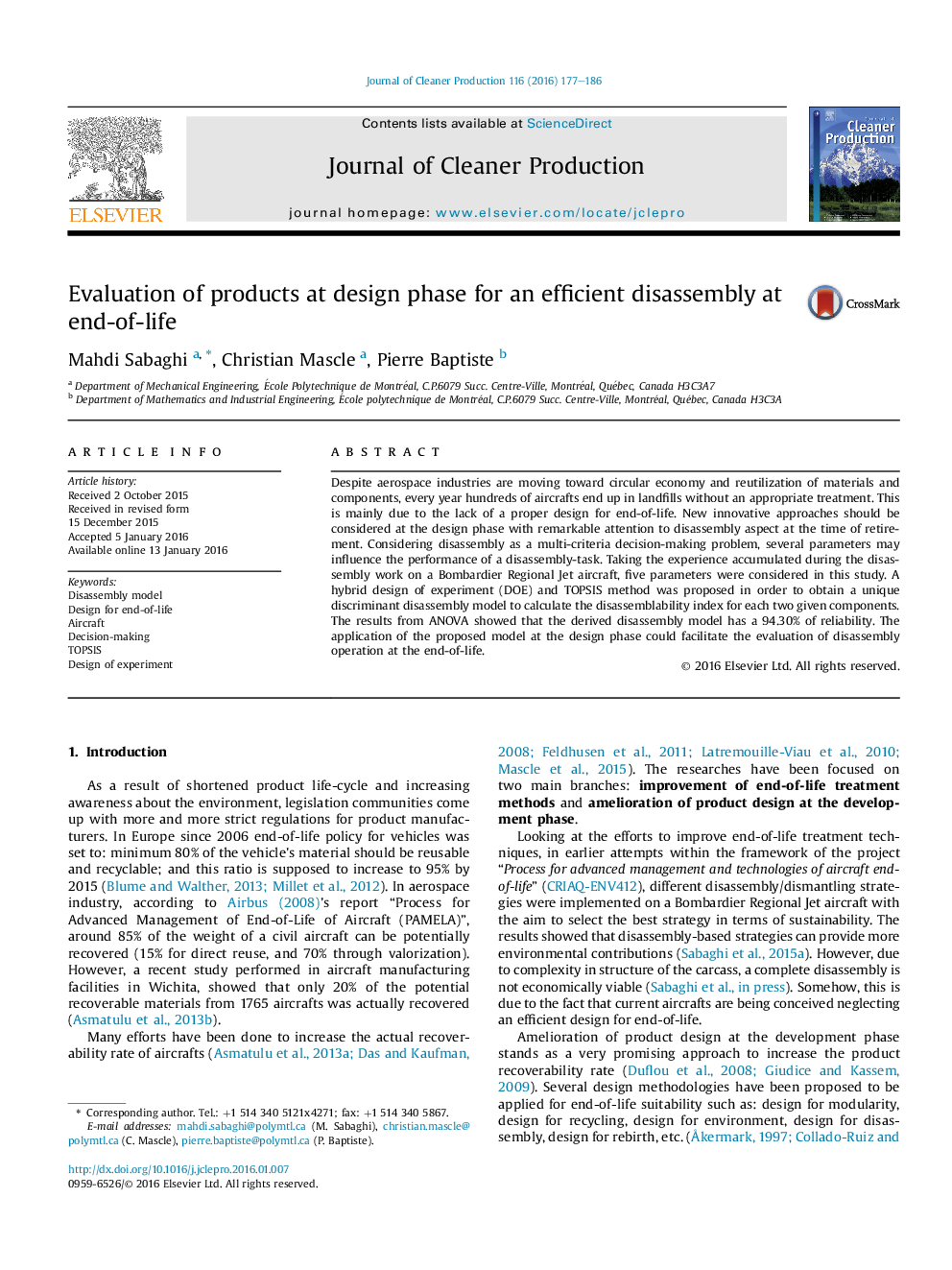| Article ID | Journal | Published Year | Pages | File Type |
|---|---|---|---|---|
| 1744196 | Journal of Cleaner Production | 2016 | 10 Pages |
•A hybrid evaluation methodology based on TOPSIS and DOE was proposed.•The application of the model was examined in an aerospace project.•Results showed the high reliability of the developed disassembly model.•The model can be suitable in disassembly sequencing and reengineering purposes.•It is also applicable to other industries having challenges in design and life-cycle.
Despite aerospace industries are moving toward circular economy and reutilization of materials and components, every year hundreds of aircrafts end up in landfills without an appropriate treatment. This is mainly due to the lack of a proper design for end-of-life. New innovative approaches should be considered at the design phase with remarkable attention to disassembly aspect at the time of retirement. Considering disassembly as a multi-criteria decision-making problem, several parameters may influence the performance of a disassembly-task. Taking the experience accumulated during the disassembly work on a Bombardier Regional Jet aircraft, five parameters were considered in this study. A hybrid design of experiment (DOE) and TOPSIS method was proposed in order to obtain a unique discriminant disassembly model to calculate the disassemblability index for each two given components. The results from ANOVA showed that the derived disassembly model has a 94.30% of reliability. The application of the proposed model at the design phase could facilitate the evaluation of disassembly operation at the end-of-life.
